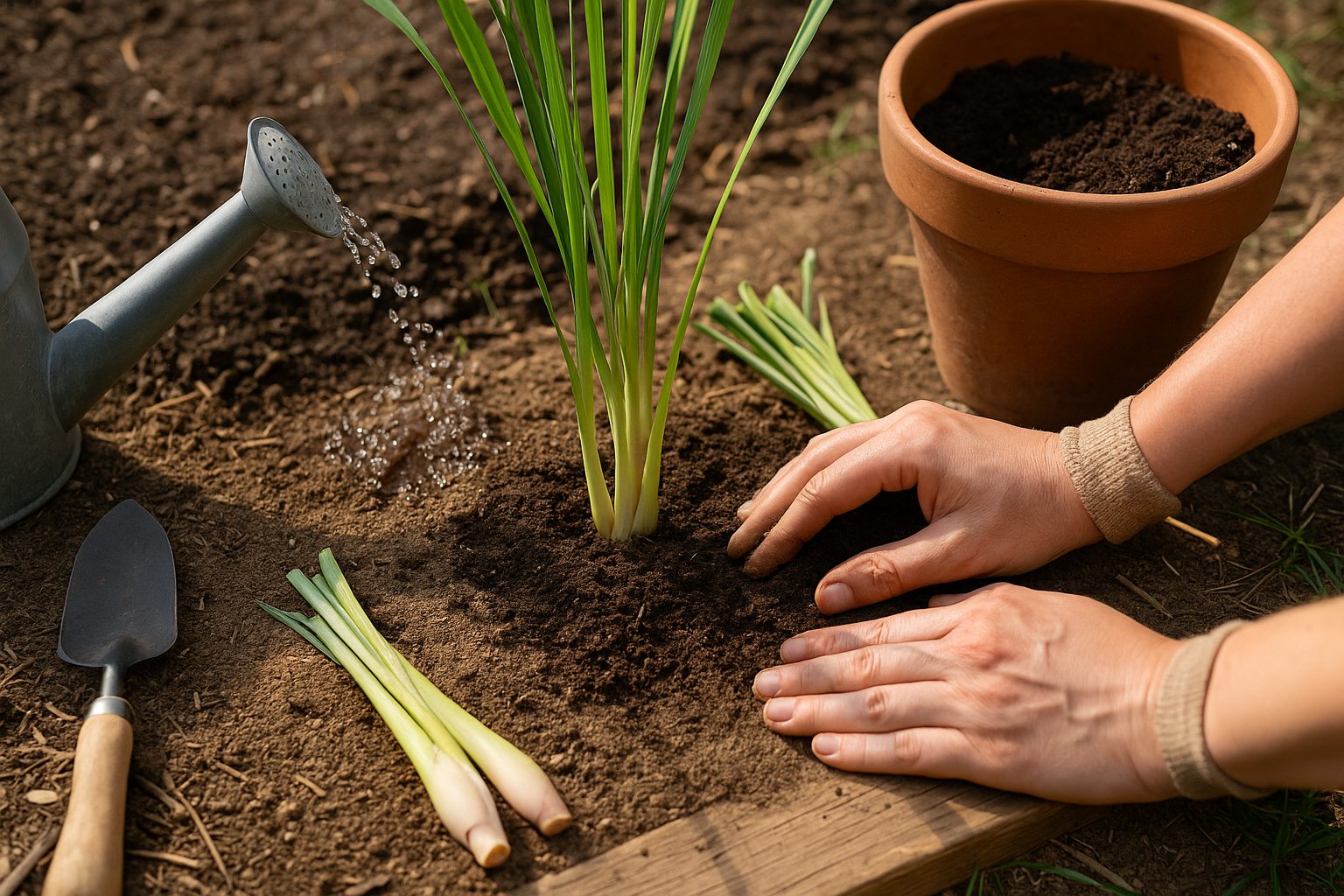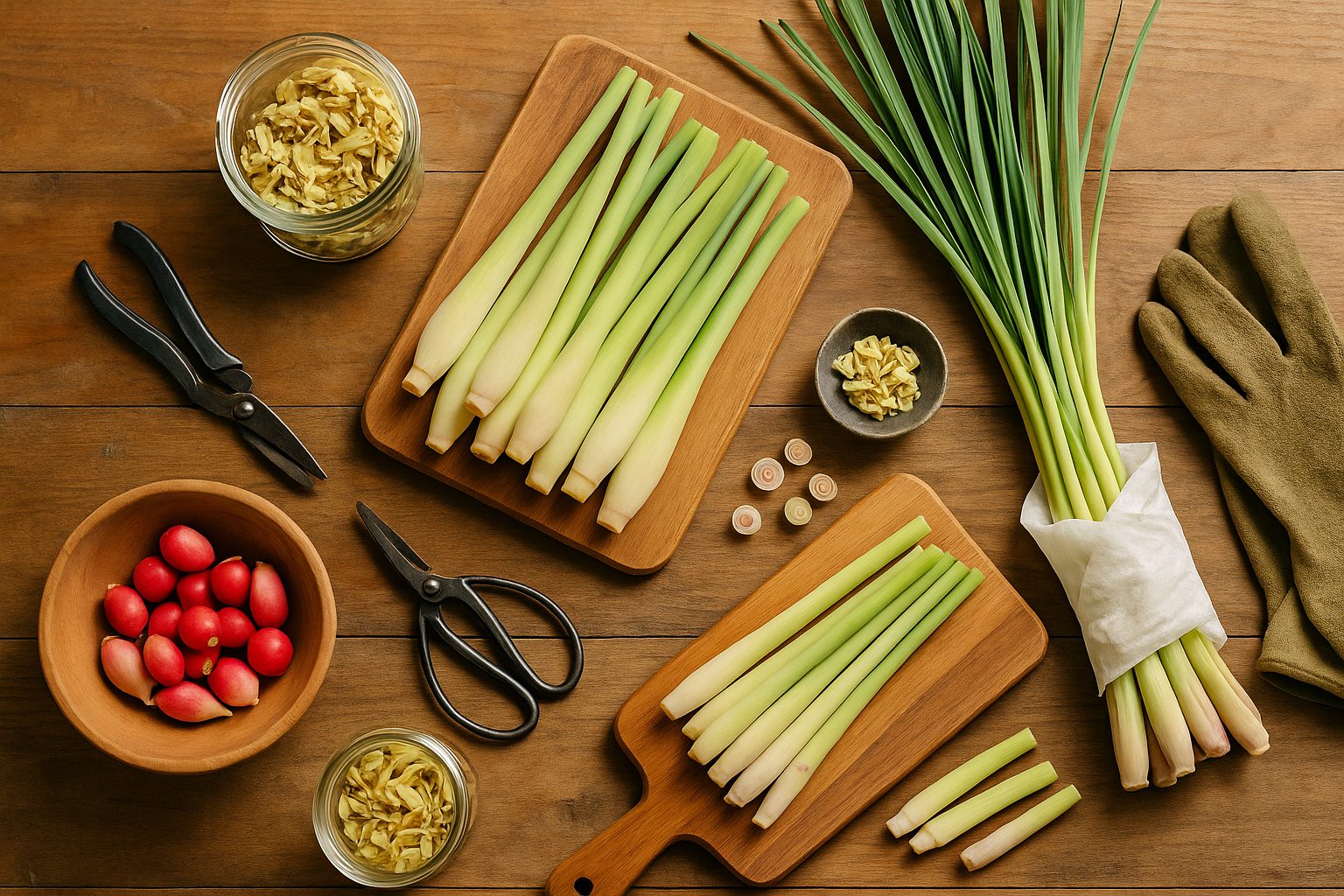Introduction to Lemongrass
Lemongrass is more than just a fragrant addition to your kitchen—its citrusy flavor and aroma make it a favorite in Asian cooking, herbal teas, and even garden beds where it can ward off pests as a companion plant. But if you’re diving into cultivating this versatile herb, being aware of common lemongrass growing mistakes is key to ensuring it flourishes both on your plate and in your yard.
Many beginners, excited by its culinary and medicinal potential, rush into planting lemongrass only to encounter issues like poor growth, yellowing leaves, or pest infestations. In this guide, you’ll learn how to avoid these pitfalls with simple, actionable steps.
Whether you’re growing lemongrass for a steady supply of fresh stalks for soup, brewing aromatic herbal teas, or keeping your vegetable patch healthier, we’ll cover the best practices for planting, watering, and harvesting. Real-world gardeners know that healthy lemongrass starts with the right soil, spacing, and sunlight—and even minor missteps can set you back.
By understanding where new growers typically go wrong, you’ll save time and resources while enjoying lush, thriving lemongrass throughout the season. Let’s set you up for success with essential tips for effortless lemongrass cultivation.
Where and How to Plant Lemongrass

Lemongrass thrives in warm, sunny locations and can be grown both outdoors in garden beds and indoors in pots. Outdoors, choose a spot that receives at least six hours of direct sunlight daily and has well-draining soil—sandy or loamy soils are best to avoid soggy roots.
If your climate is cooler or you’re short on garden space, lemongrass does well in large pots placed on a sunny patio or a bright indoor windowsill.
To plant, start by spacing each lemongrass stalk about 24 inches apart in the ground or provide a roomy pot with drainage holes. Dig a hole just deep enough for the roots and position the stalk so the base sits just below the soil surface. Backfill with soil, gently pressing down to eliminate air pockets, then water thoroughly to settle the plant.
Keep the soil consistently moist during the first few weeks to help the roots establish, but be careful not to overwater—lemongrass dislikes sitting in waterlogged soil. If starting indoors, use a high-quality potting mix and rotate the pot occasionally so all sides receive sunlight.
With a little attention to location, light, and soil, you’ll set your lemongrass up for a healthy start and lush growth.
Essential Lemongrass Care Tips
Lemongrass thrives when given the right care, and a few simple steps can keep your plants happy and productive. Water lemongrass consistently, aiming to keep the soil evenly moist but not soggy. In hot weather, you might water every other day, while cooler periods usually require less frequent watering.
Position your lemongrass in a spot that receives at least six to eight hours of direct sunlight daily—this tropical herb loves warmth and light. Every four to six weeks during the growing season, feed it with a balanced liquid fertilizer or work compost into the soil to provide steady nutrients.
Regular pruning is key for lush growth. Trim any dead leaves and cut back outer stalks as they mature, which helps the plant focus its energy on new shoots. When harvesting, use sharp scissors or garden shears to snip off stalks at the base, leaving the inner shoots untouched to encourage regrowth.
If you live in a colder climate, dig up a few stalks and pot them before the first frost—lemongrass doesn’t tolerate freezing temperatures. Keep these pots indoors on a sunny windowsill, watering sparingly through winter. In spring, replant the healthy stalks outdoors once the weather warms up.
With these simple habits, you’ll keep your lemongrass vigorous year-round, ensuring a steady harvest for your kitchen.
Transplanting and Propagating Lemongrass
Transplanting lemongrass is best done in spring or early summer, when temperatures are warm and plants can recover quickly. Young lemongrass seedlings should be moved once they’re about 6 inches tall, while mature clumps can be divided and transplanted anytime during the growing season.
To transplant, dig up the plant gently, keeping as much of the root system intact as possible, and replant in a sunny spot with rich, well-drained soil. Water thoroughly right after planting.
Propagation Methods
For propagation, you can either divide existing clumps or use mature store-bought stalks:
- Divide existing clumps: Simply separate a section with at least a few stalks and roots.
- Use mature stalks: Trim the leaves and root bases, submerge the base in water until new roots form, then plant in soil.
To reduce transplant shock, avoid disturbing the roots more than necessary and keep the plant shaded for the first few days after moving. Mulching around the base helps retain moisture and moderate soil temperature.
Whether starting from divisions or stalks, keeping the soil consistently moist but not soggy will encourage healthy growth and ensure your lemongrass establishes quickly.
Common Lemongrass Growing Problems (and Solutions)
Growing lemongrass at home is rewarding, but it can come with a few challenges. One common issue is yellowing leaves, often caused by inadequate sunlight or nutrient-poor soil. Make sure your lemongrass receives at least six hours of direct sunlight each day and is planted in well-draining, fertile soil. Adding compost or organic fertilizer can boost growth.
Pests like aphids and spider mites may also appear, sucking sap from the leaves and stunting growth. Try rinsing leaves with a strong jet of water or introducing beneficial insects like ladybugs to keep pests in check.
Fungal diseases can show up as brown or black spots on the leaves, usually due to overwatering or poor air circulation. To prevent this, water at the base of the plant early in the day and make sure the area isn’t overcrowded. Regularly remove dead or diseased foliage to discourage the spread of infection.
If your lemongrass looks spindly or fails to thrive, check for compacted soil or root-bound conditions. Loosening the soil and dividing crowded clumps can help plants recover.
By staying attentive to these signs and using eco-friendly solutions, you’ll keep your lemongrass healthy and productive.
Best and Worst Companion Plants for Lemongrass
Lemongrass is a friendly neighbor to many herbs and veggies, making it a smart addition to your garden. Pairing lemongrass with tomatoes works well because its strong citrus fragrance helps repel pests like whiteflies that typically target tomato plants.
Basil is another great companion—both herbs prefer similarly sunny, well-drained spots, and basil can help enhance lemongrass’s pest-fighting power. You can also try pairing lemongrass with peppers, mint, or marigolds for added insect protection and vibrant garden beds.
On the other hand, avoid planting lemongrass near plants that need more shade or consistently moist soil, such as lettuce and most brassicas (like broccoli and cabbage), because lemongrass can out-compete them for water and sunlight.
To keep the peace in your garden, give lemongrass plenty of space to spread, and tuck in compatible plants around its borders—this encourages airflow and deters insects naturally. For bonus harmony, mulch around each plant to lock in moisture and reduce weeds without crowding their roots.
With thoughtful pairing, you’ll enjoy a healthy, easy-care garden where lemongrass thrives and helps protect its neighbors.
Harvesting, Storing, and Using Lemongrass

Knowing when and how to harvest lemongrass makes all the difference in flavor and freshness. The best time to harvest is when the stalks are at least half an inch thick and about a foot tall—usually four to six months after planting. Use a sharp knife or garden shears to cut the stalks at ground level, trimming away any woody tops or brown leaves. For best results, harvest in the morning when the oils are most potent.
If you plan to use lemongrass soon, wrap whole stalks in damp paper towels and store them in a plastic bag in the fridge, where they’ll stay fresh for up to two weeks. You can also freeze trimmed stalks in airtight containers or bags for several months. To dry lemongrass for tea or seasoning, slice the stalks thinly and spread them out in a warm, dry place until crisp, then store in a sealed jar away from light.
Lemongrass shines in many dishes: add bruised or chopped stalks to soups, curries, stir-fries, or marinades for a zesty citrus aroma. It’s equally at home in homemade teas, where a couple of stalks steeped in hot water bring a bright, calming flavor. Beyond the kitchen, you can simmer lemongrass in water for a natural air freshener or mix its essential oil into homemade cleaning sprays.
Whether you’re whipping up Thai tom yum soup or simply freshening your home, freshly harvested lemongrass is a versatile ally you’ll want on hand.
